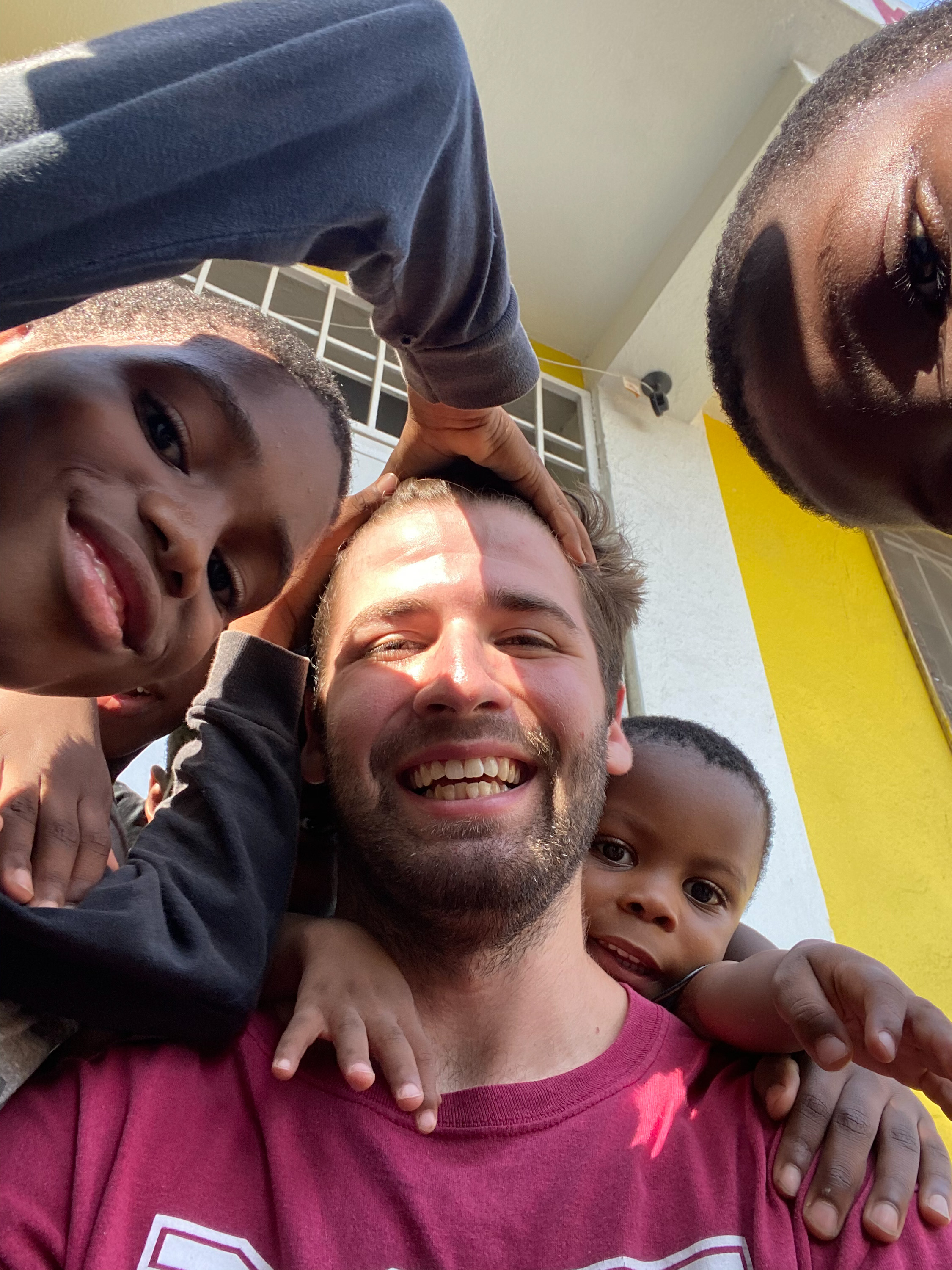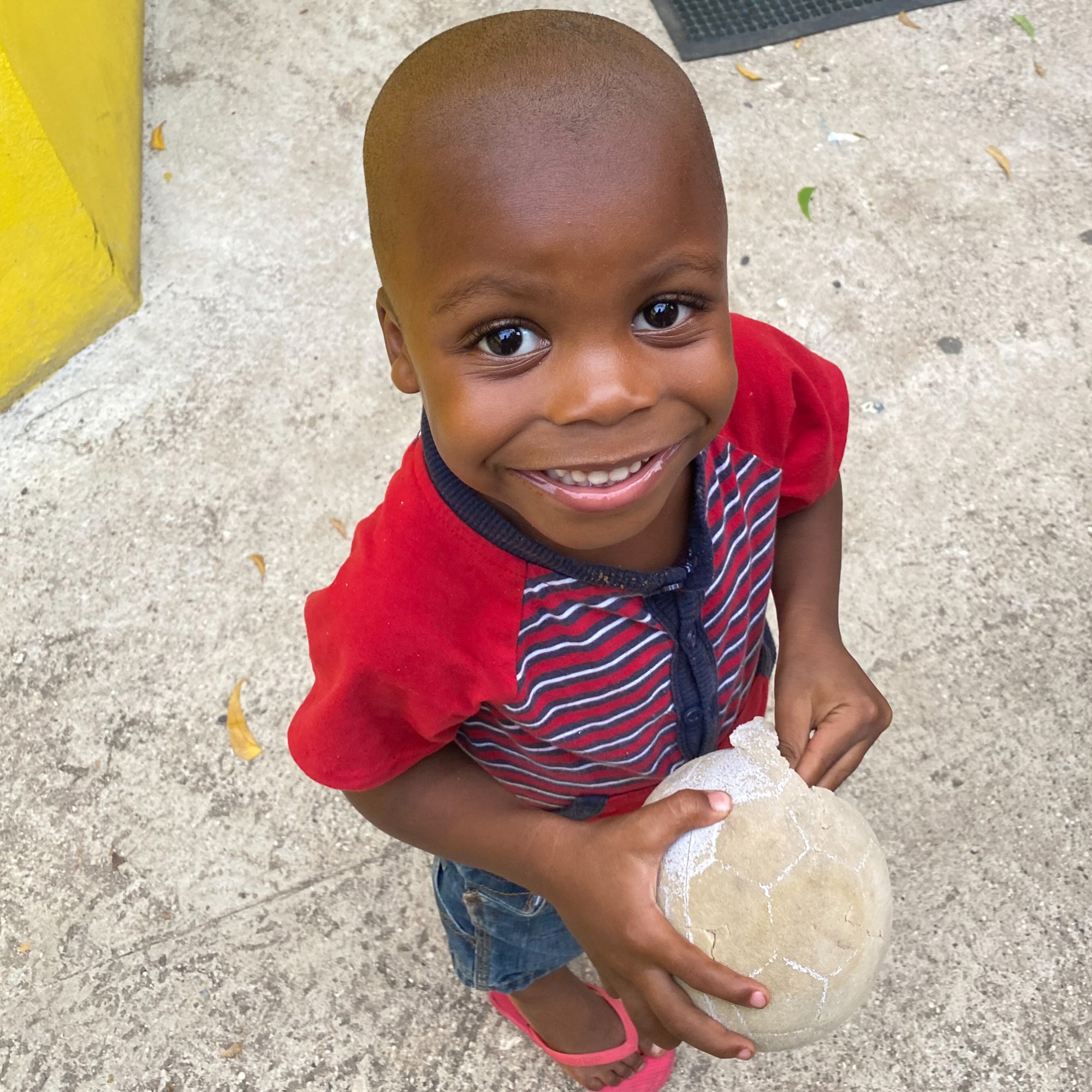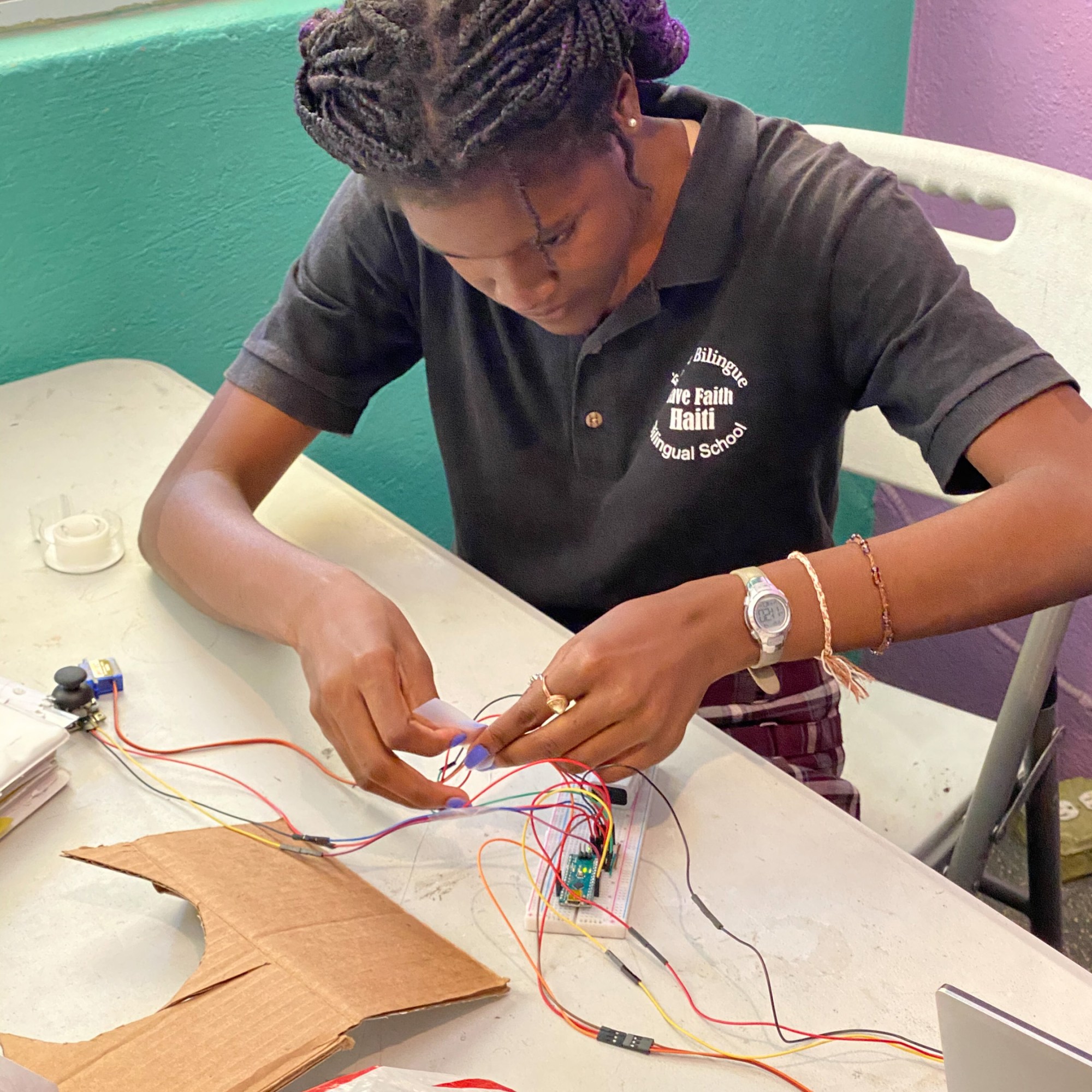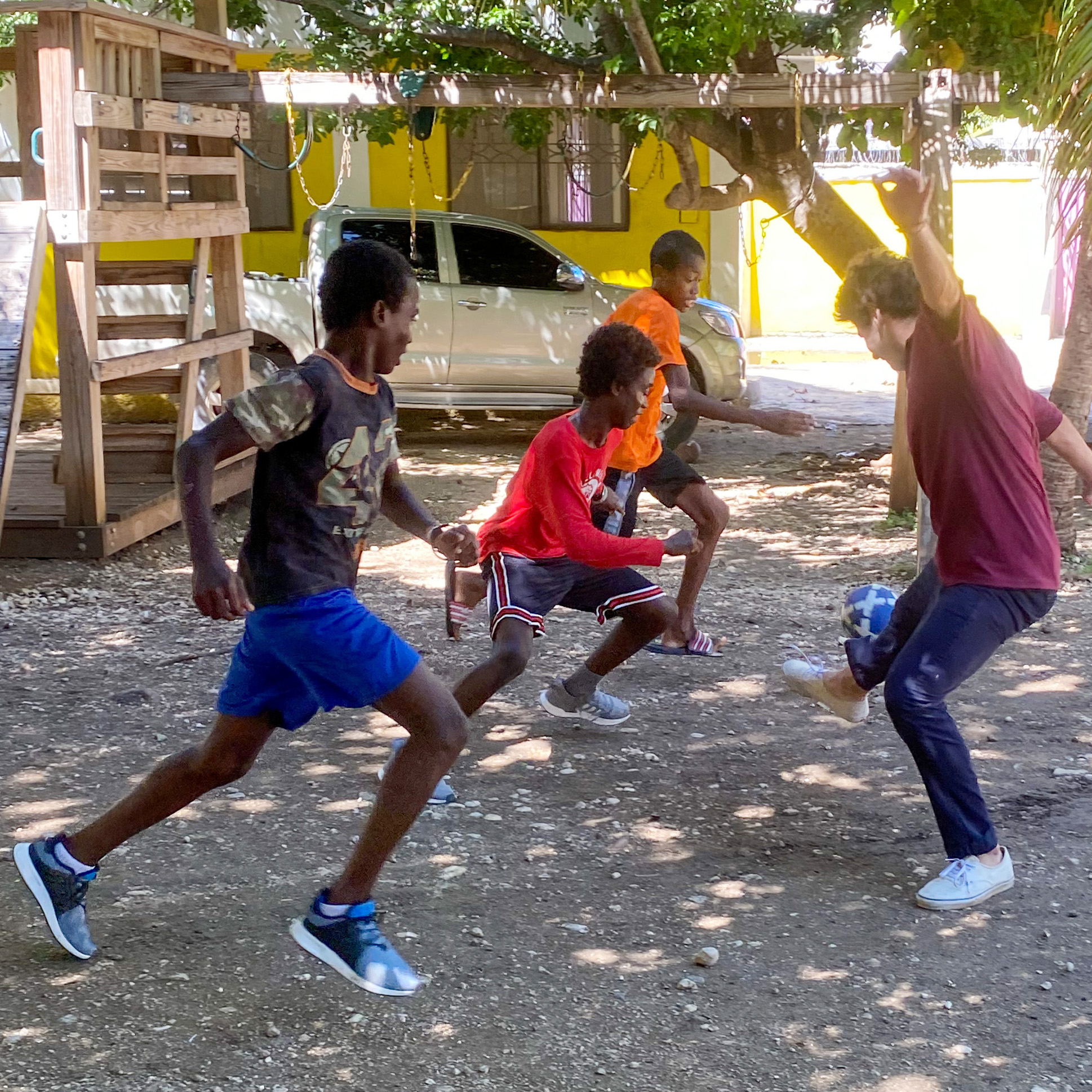“Mr. Eli, can you stay?”
I’d planned to volunteer in Haiti for three weeks. But the orphanage desperately needed teachers during the covid lockdown—and I couldn’t say no to a three-year-old.

In the summer of 2020 I, like a lot of people, felt a little bit lost. I’d just had two internships canceled because of covid and was stuck at home with my parents, which had gotten old. (There is only so much Jeopardy! and Family Feud one can watch.) So when I heard about an opportunity to volunteer at an orphanage in Haiti, I immediately said yes. Knowing that people were struggling during the pandemic, I wanted to help in any way I could—and I clearly had nothing better to do.
On August 1 I arrived at Have Faith Haiti Mission and Orphanage in Port-au-Prince, planning to stay for a few weeks and then head back home to do my fall semester classes online. Because the kids were on their summer break, I ran games and activities in the mornings and led reading time in the afternoons. The rest of the time I was expected to just hang out with the kids.
Those first two weeks were difficult because I was essentially the only American and felt like an outsider. I was incredibly lonely. I didn’t know anyone, I didn’t understand the culture, and I certainly didn’t know any Creole. Most of the kids spoke English, so at least I could understand 50% of their conversations. But beyond that, I was a fish as far out of water as one could be. Then I’m not sure whether I became less scared and more outgoing or they started to accept me, but by week three, I felt like a part of their community. I was playing basketball with the boys (and trash-talking in the limited Creole I had picked up), taking dance lessons with the girls, and cracking jokes with the staff while barely understanding the language.
I had been hearing rumblings that there weren’t going to be enough teachers for the fall semester, since the mission was locked down for covid and all the teachers would have to live on-site. The people who ran the mission asked if I could stay and teach, but I didn’t know if I was up for five more months in Haiti, confined to a property that was just a third of an acre. Then the youngest kid at the mission, a three-year-old named Jerry, came up to me and said, in the best English he could muster, “Mr. Eli, can you stay?”
How could I not? I decided not to think about the limited running water, the prospect of five more months of bean water with grits for almost every meal, or the fact that I had no idea how to teach. I had already fallen so much in love with these kids that none of that mattered.


Three-year-old Jerry with a well-loved foam ball (left) and a student wires lights for a toy her team designed in Brooks’s engineering class.
After a one-day crash course in teaching, I was on my own. I taught every single age and subject, from preschool dance—where I literally just danced with five-year-olds who would run and hug me instead of freezing during freeze dance—to high school chemistry and geometry. I was also assigned the task of creating an entirely new class titled “engineering” for both middle schoolers and high schoolers. I quickly rebranded the class Engineering Toy Design and did my best to develop a curriculum based on the MIT class I’d taken on that subject, working in as much engineering as possible while making sure it was fun and engaging.
My bedroom was located next to the playground, so my weekdays all started pretty much the same way, with kids yelling outside my window at 6:30 a.m. Then from about 8 a.m. to 5 p.m. I taught—generally younger kids in the morning and older ones in the afternoon. After that I would get begged to play soccer, basketball, jump rope, or any random activity outside until all the kids at the mission gathered inside the gazebo at 8 p.m. for devotion. About 30 minutes of singing and prayer later, the younger kids would go to bed—unless it was Friday movie night—and I would help some of the high schoolers with their homework and prep for the next school day until 10 or 11 p.m.
It was the most exhausting thing I have ever done—and the most rewarding. I got to watch students go from barely recognizing letters to being able to read sentences. I got to see students who didn’t know the difference between a ray and a line go on to ace their geometry final. I could see that I was having an impact on their lives, even if it was small. And the kids made me laugh and smile every single day.

That said, I definitely had some moments and days when I really struggled. It was draining having to be “Mr. Eli” all day, every day, for six months straight. Some days I cried from exhaustion or from the loneliness of being away from everything I knew. Some days I didn’t know if I was making a difference. But in the end, I knew that I was. And seeing all those smiling faces every morning made all my worries go away.
Teaching a lot of different subjects and a lot of different students, I genuinely think I learned more from them than they did from me. I’ve struggled with mental health my entire life, finding it hard to truly feel happy. But being in Haiti with those kids provided some of the happiest moments of my life. They had nothing and were happier and more sure of themselves than I had ever been. They taught me how to be grateful for every day that I’m alive and to really cherish moments with people you care about.
I fell in love with teaching in Haiti, and now I can see a future as a teacher. I love watching kids’ imaginations run wild and seeing their unwavering confidence that they can do anything. I love making subjects that seem inherently boring into something exciting that students want to learn. Most of all, I love helping people and making their lives better—something teachers can do every single day. My life completely changed because of those 40 kids in Haiti, and I will forever be grateful for everything they taught me.
Eli Brooks ’22 has returned to Haiti twice since 2020 and plans to incorporate teaching into his life whatever his career may be. Learn more about the orphanage at havefaithhaiti.org.
Keep Reading
Most Popular
Large language models can do jaw-dropping things. But nobody knows exactly why.
And that's a problem. Figuring it out is one of the biggest scientific puzzles of our time and a crucial step towards controlling more powerful future models.
The problem with plug-in hybrids? Their drivers.
Plug-in hybrids are often sold as a transition to EVs, but new data from Europe shows we’re still underestimating the emissions they produce.
Google DeepMind’s new generative model makes Super Mario–like games from scratch
Genie learns how to control games by watching hours and hours of video. It could help train next-gen robots too.
How scientists traced a mysterious covid case back to six toilets
When wastewater surveillance turns into a hunt for a single infected individual, the ethics get tricky.
Stay connected
Get the latest updates from
MIT Technology Review
Discover special offers, top stories, upcoming events, and more.